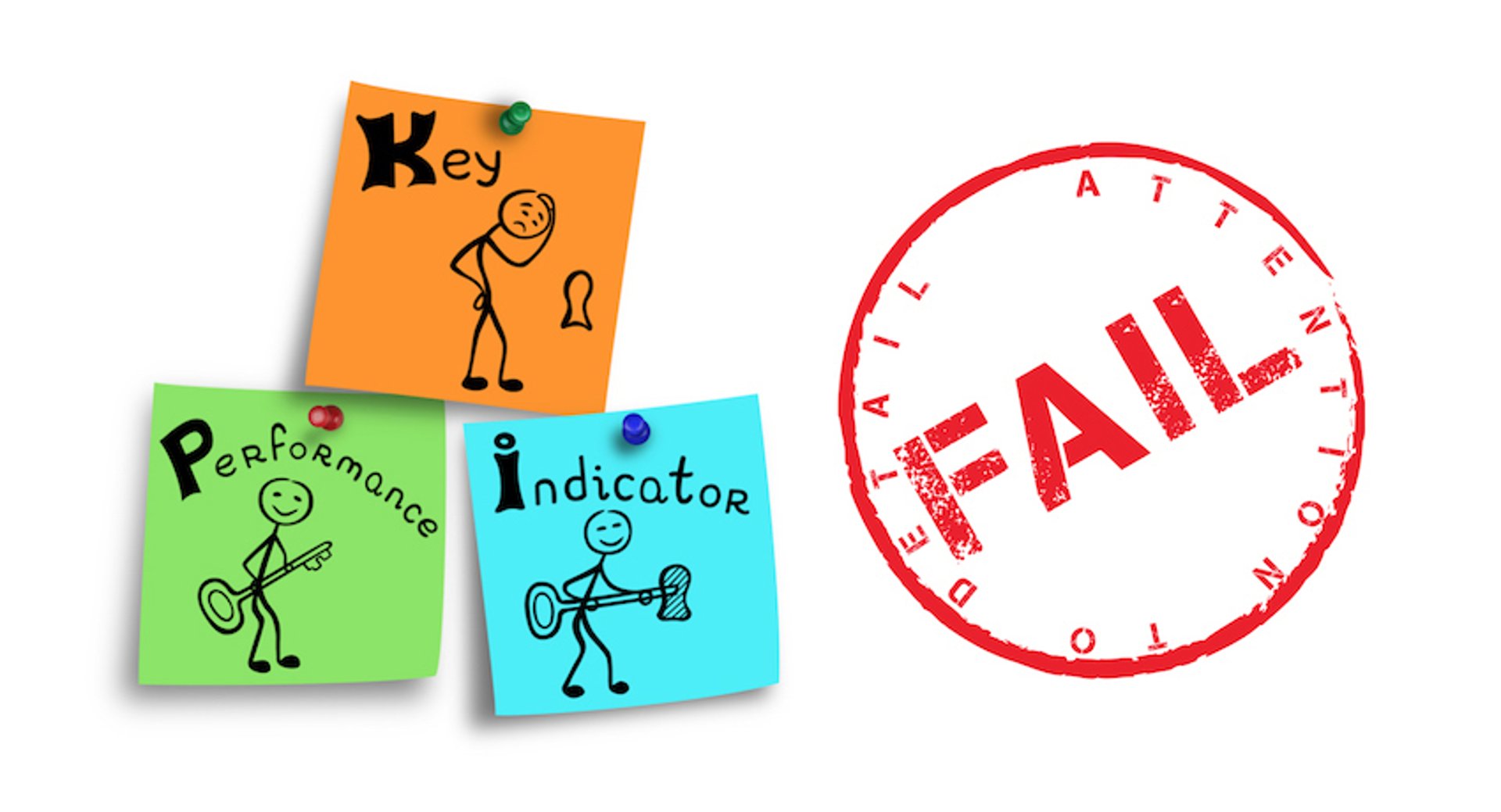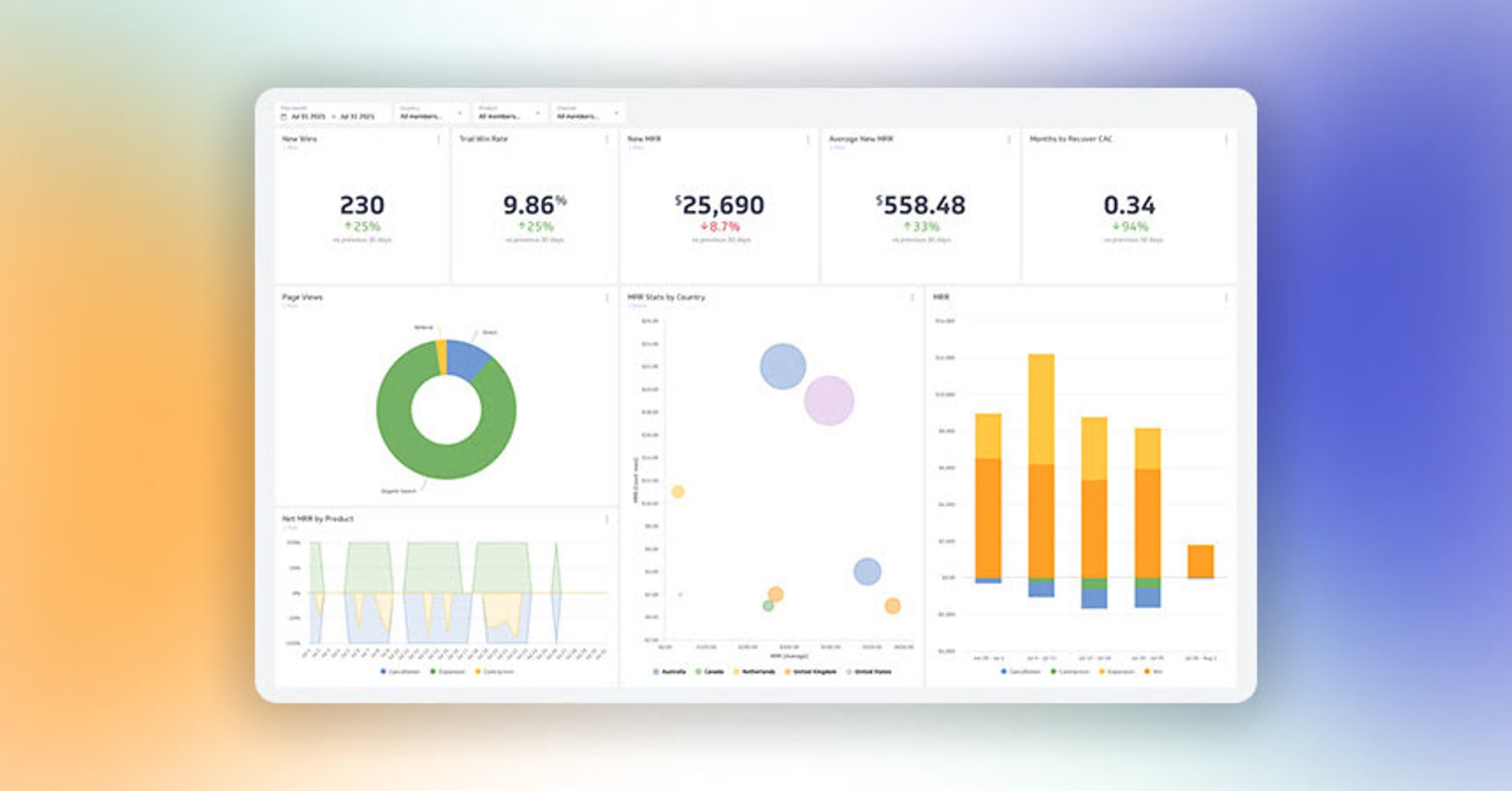Learn why KPIs fail and how to pick ones to fail

Published 2023-02-13
Summary - Setting the right KPIs is critical for success. We believe that setting failure KPIs can help create a healthier, more realistic pathway to success.
Have you ever been part of a KPI definition strategy session?
These types of meetings often end on a high note—your KPIs have been defined, you’ve got a rough outline on how to hit your targets, and your team is pretty clear on how to measure progress.
But when it comes to implementing a performance measurement strategy, the reality is often quite different than your lofty objectives.
KPIs do fail. In this post I’ll look into 5 ways KPIs typically fail:
- Poorly defined
- Lack accountability
- Aren't achievable
- Lack specificity
- Too hard to measure
Poorly defined KPIs are doomed
A well-defined KPI is one that stands the test of time. I recommend checking out this post on defining KPIs and seriously following the SMART exercise mentioned there.
The truth is that a well-defined KPI is structured and incorporates feedback from multiple areas of your business.
Cookie-cutter KPIs are a good starting point. But a KPI must address the unique challenges and opportunities of your business. Your unique KPIs ought to be a window into your current performance as it relates to your performance objectives.
Want to grow the business 2X this year? Then your KPIs should be aligned around that goal.
KPIs often fail when they’re ill-defined. The most common pitfall at the definition stage is defining your organization's KPIs without outside feedback.
A KPI should be recognizable and properly communicated outside of your business unit or department. And of course achieving your KPI target should have a clear and measureable impact on the business.
KPIs fail without accountability
You’ve defined a killer KPI that you know is going to move the needle for the business. Congrats! Now, who owns that KPI?
Each KPI you define must have an owner, someone who is responsible for tracking and achieving the target associated with that KPI. It may sound strange, but KPIs require nurturing and nourishment. An isolated KPI will wither and die on the vine.
When defining KPIs, ensure you also define a clear owner. If that person’s job performance is tied to that KPI, even better. Incentivizing achievement of KPIs is a recipe for success.
KPIs must have achievable targets
So you want to grow revenue to $50 million this year? Sounds great.
But if your starting point is $5 million, you may be setting yourself up for a KPI fail.
A good way to set up targets for KPIs is to associate targets with a specific timeframe. I like to take my main KPI, such as New Wins, and break it out by monthly and annual targets. This allows me to track progress on an ongoing basis and continually take corrective action.
The real value of this, however, is giving your team and the business a near-term target that can be achieved, one that contributes to the achievement of an annual KPI target.
KPIs without specific targets will fail

As a runner, I love challenging myself to run faster or longer than ever before. It’s a lot easier for me to achieve my goals if I set out specific milestones. It’s simple, but there's a huge difference between saying I want to run a faster 5KM race and saying I want to run 5KM in 30 minutes.
Business outcomes benefit from the same degree of specificity. Rather than channeling our inner Sisyphus and always challenging ourselves to improve, give yourself a specific target so you know when you can stop pushing the rock up the hill and start working on the next rock.
The KPI is too hard to measure
The most common reason KPIs fail is because they can be hard to measure. KPIs blend data, business objectives, and departmental targets to act as guideposts for success. Without that first piece—data—your KPIs are abstact and conceptual.
Data is what grounds your KPIs, so you better make sure you can actually measure and track your KPIs over time.
A great example of this is the desire to measure “wins influenced by social media.” It’s a brilliant concept that social media marketers rightfully laud and work towards.
However, measuring this isn��’t easy. Social engagements often eschew the measurement technology traditional digital marketing teams have in place. Tracking cookies and inferred acquisition paths fail to demonstrate the real value of a positive social interaction.
I’d rather roll out simpler, eminently measurable KPIs than abstract, aspirational KPIs that are impossible to measure.
Incorporating a failure mindset with KPI's for success
Fail fast! Right?
Few words have reinvigorated their brand the way “failure” has in the past few years.
Failure was once synonymous with negativity. Now it’s acknowledged as an integral building block of success.
Everyone from CEOs such as Amazon's Jeff Bezos to thought leaders such as Simon Sinek are extolling the virtues of failure.
The question then becomes: if failure is so important, why don’t we measure it?
Measure failure? Really?
Yes! Failure is many things. But more than anything it’s a sign of ambition.
Cue that old saying often attributed to Wayne Gretzky:
"You miss 100 percent of the shots you don’t take.”
For this, and the many other quotes about failure you’ll find on the internet, the evangelism of failure is an effort to overcome the stigma associated with the word.
Example: Writing this blog post. Even though I had a good idea of what I wanted to say, the words didn’t just spring forth from my brain to my fingertips in one swift motion.
I deleted. I changed. I rewrote.

I tried and tried and tried until it ended up looking like what I wanted it to. There were many failures along the way. In fact, as it I look back at this post, it was built on a series of seemingly infinite little failures.
The pessimist in me might look at this and say: "You should have just gotten it right in the first place so you wouldn't have wasted so much time!"
But this sort of thinking masks a fact we rarely confront: failure is a given.
If I am trying to accomplish something, I acknowledge from the beginning that reaching my goal won’t be a straight line. There will be setbacks and frustrations; these are signs of effort.
Look at it this way: you’re going to fail, regardless. The sooner you get failure out of the way the closer you are to reaching your goal.

OK, maybe failure’s not as bad as it seems. But should we really be measuring it with key performance indicators?
If failure is a sign of effort, then it makes total sense to measure it with KPIs. In fact, some say we should even be aiming for failure.
Creative nonfiction writer Kim Liao, to take an example from one particularly talented writer, says she aims for 100 rejection letters per year.
“My vulnerable ego only wants to be loved and accepted, to have my words ring out from a loudspeaker in Times Square while a neon ticker scrolls the text across a skyscraper, but it’s a big old coward,” she wrote in an essay.
“Perhaps aiming for rejection, a far more attainable goal, would take some of the sting out of this ego-bruising exercise—which so often feels like an exercise in futility.”
Don’t get me wrong. Success is, in nearly every sense of the term, a good thing. This idea isn’t complicated. The very word implies that you have accomplished what you set out to do.
But success also carries with it an opportunity cost—you miss out on an opportunity to learn from failure. What did I do wrong? How can I correct it for next time? What did I take away from this experience?

What are some good KPIs for failure?
This will, like any KPI, depend on what your goal is.
If you’re trying to expand your network, maybe it will mean sending 50 emails for coffee meetings that never get answered.
If you’re in sales, it might mean setting a goal for unanswered cold calls.
If you’re trying to build a career as a writer, it might mean doing as Liao does and shooting for 100 rejection letters each year.
In general, though, it’s best to come up with KPIs for failure that measure your growth in one of the following key areas.
A stepping stone on the road to success
Sometimes failure is inevitable in getting to where you need to go. The sooner you start failing, the sooner you’ll wind up at your goal.
The advice: jump in, strive to let go of the ego, and start failing now. Those first failures, though they may not feel like it at the time, mean you're taking steps on the road to success.
An opportunity to learn
Yes, it’s a cliché that we learn more from our failures than our success, but it’s also true. Failure gives you an opportunity to reassess and readjust, then position yourself for getting it right the next time.
The advice: don't just fail for failure's sake. Conduct project post-mortems, or otherwise carve out the time to reflect on (and even write about) your failures so that you can better position yourself in the future.
A strengthener
Bouncing back from failure builds your resilience. And resilience is what gives you the strength to keep plugging when times get tough.
The advice: Research from Harvard University suggests that resilience results from interactions between internal predispositions and external experiences. Framing failure as an inherent, natural part of success, therefore, can serve as a far healthier starting place than seeing failure as an irreversible catastrophe.
Last thoughts on the KPIs of failure
Aiming for failure is counterintuitive. And it can be easy to get carried away with aiming for failure that has no end goal.
Set some KPIs for failure, and you’ll ensure that you’re monitoring your progress even when the results aren't rainbows and sunshine.
Do you have any good KPIs for failure? Let us know in the comments.
Related Articles

17 KPIs Every Data-Driven Manager Needs to Lead Their Team
By Danielle Poleski — October 14th, 2025
7 ways to present KPIs that your management team will love
By Danielle Poleski — September 25th, 2025
12 Important Sales Enablement Metrics You Shouldn't Miss
By Grace Lau — September 19th, 2025

